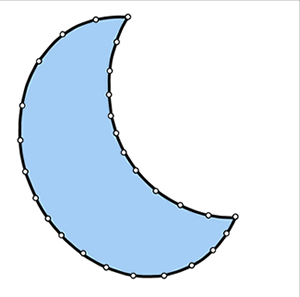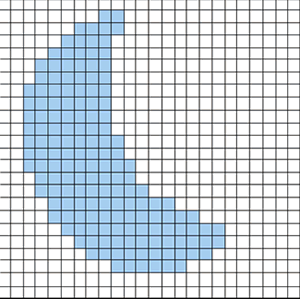File Formats
For preparing digital
art intended for print, The Sheridan Group recommends using professional
graphics applications (e.g., Adobe Photoshop and/or Illustrator), and
saving files as TIFF or EPS.
Word processors and
spreadsheet or presentation applications, although suitable for
creating files for office or Internet use, are not recommended
for creating digital art for print. Microsoft Office applications
are included in this group. In some cases, however, such files
may be converted so as to enable use.

 |
Vector
Graphics typically are generated using drawing
or illustration programs (e.g., Adobe Illustrator)
and are composed of mathematically-defined
geometric shapes—lines, objects and fills.
Since vectors entail both magnitude and direction,
vector elements thus are comprised of line
segments whose length represents magnitude
and whose orientation in space represents direction.
Vector
graphics usually are easily modified within
the creating application and generally are
not affected detrimentally by scaling (enlarging
or reducing their size). Because vector elements
are mathematically-defined, scaling simply
requires modification of their mathematical
locations. However, vector files do not support
photographic imagery well and often can be
problematic for cross-platform exchange. Vector
graphics typically are saved as EPS format.
Lists
and detailed explanations of different file
formats.
|

 |
Raster
Images are produced by digital image capture
devices: digital scanners or digital cameras,
or by pixel editing
programs (e.g., Adobe Photoshop). Raster
images are composed of a matrix (grid) or
bitmap of digital picture elements (pixels).
Pixels are squares or rectangles described
as black, white, gray or color. Raster images
typically are saved as TIFF format, but can
be saved as EPS as well. Whereas conversion
from vector to raster is easily accomplished,
raster conversion to vector is much more
difficult (and often is not possible). Raster
images typically are easily shared across
various platforms, but can be more difficult
than vector graphics to modify. As well,
raster graphics are impacted by scaling.
Lists
and detailed explanations of different
file formats.
|

Images scanned from
screened original art (i.e., scanned from halftone film, or scanned
from a previously-printed publication or from art produced using
a device that employs halftoning or another pattern method of
applying toner/dyes to a substrate) can be reproduced by either
copydot scan or descreen scan methods. The objective of copydot
scanning is to preserve existing halftone dots, whereas the objective
of descreen scanning is to remove dots or other structure and
subsequently apply halftone screens prior to print.


|